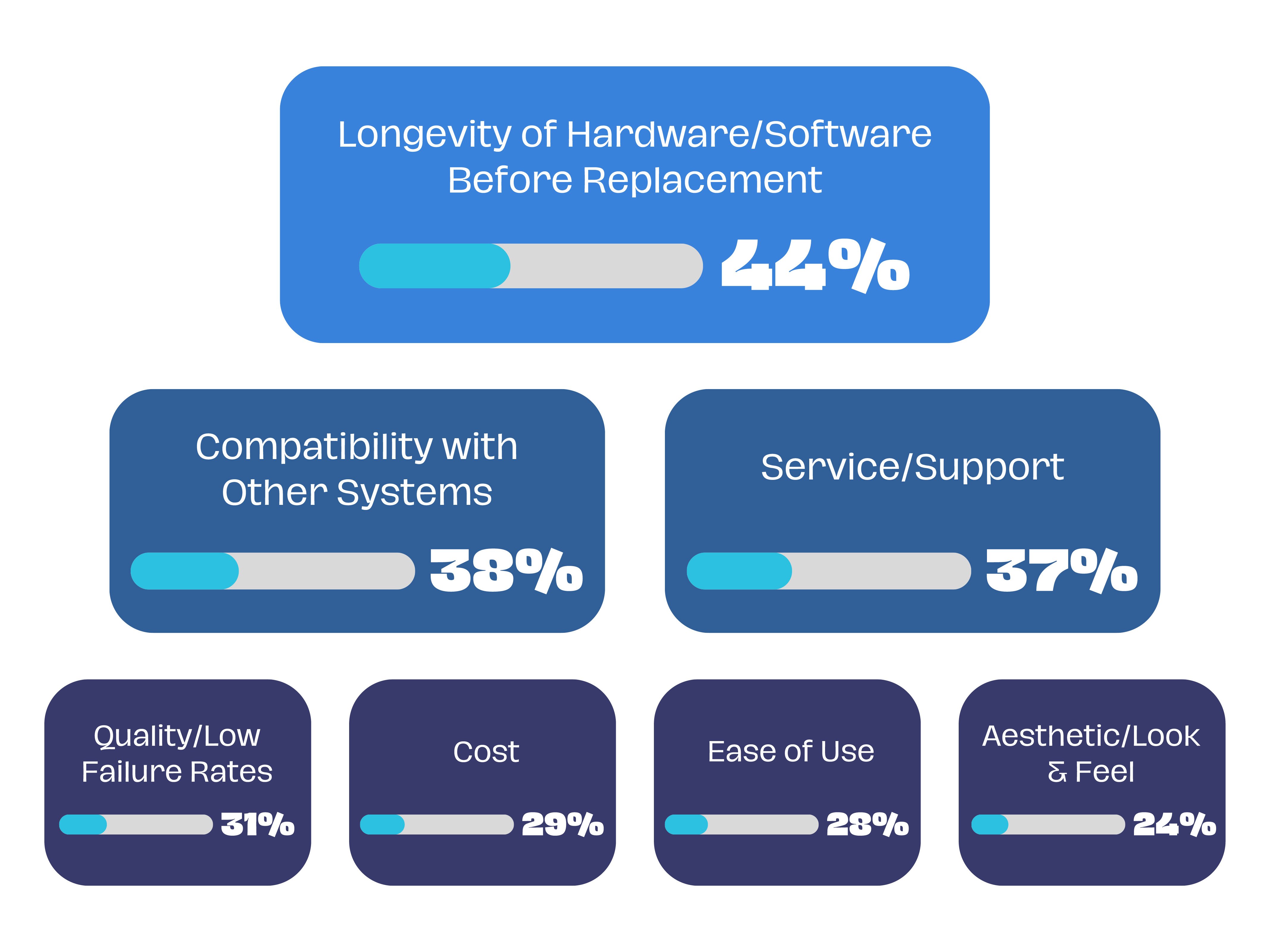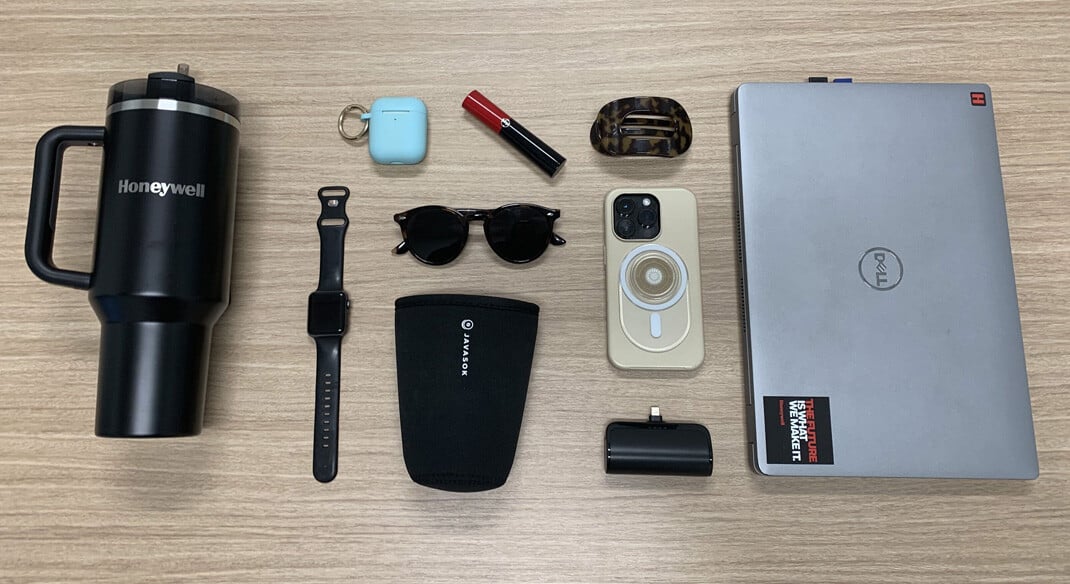
The point-of-sale (POS) system is a cornerstone of any retail operation. It manages transactions, inventory, customer data, and, in many cases, automated marketing. Understanding the preferences, challenges, and priorities of retail leaders regarding POS devices is critical for value-added resellers (VARs).
To better understand POS end-user's needs, we surveyed 125 retail executives in the United States. The respondents represented a diverse range of retail sectors and business sizes (audience snapshot below).
A big thank you to ELO for sponsoring this survey!
Our goal was to reach retail business leaders to understand their evolving needs and preferences regarding POS devices. We wanted to uncover their challenges, identify emerging trends in the industry, and explore opportunities for VARs to provide valuable solutions.
The Methodology
We employed a third-party data collection agency to gather survey responses. The respondents were recruited through a global B2B research panel and invited via email to complete the survey.
Audience Snapshot
Breakdown by Job Role

Respondent Seniority

Type of Retail Stores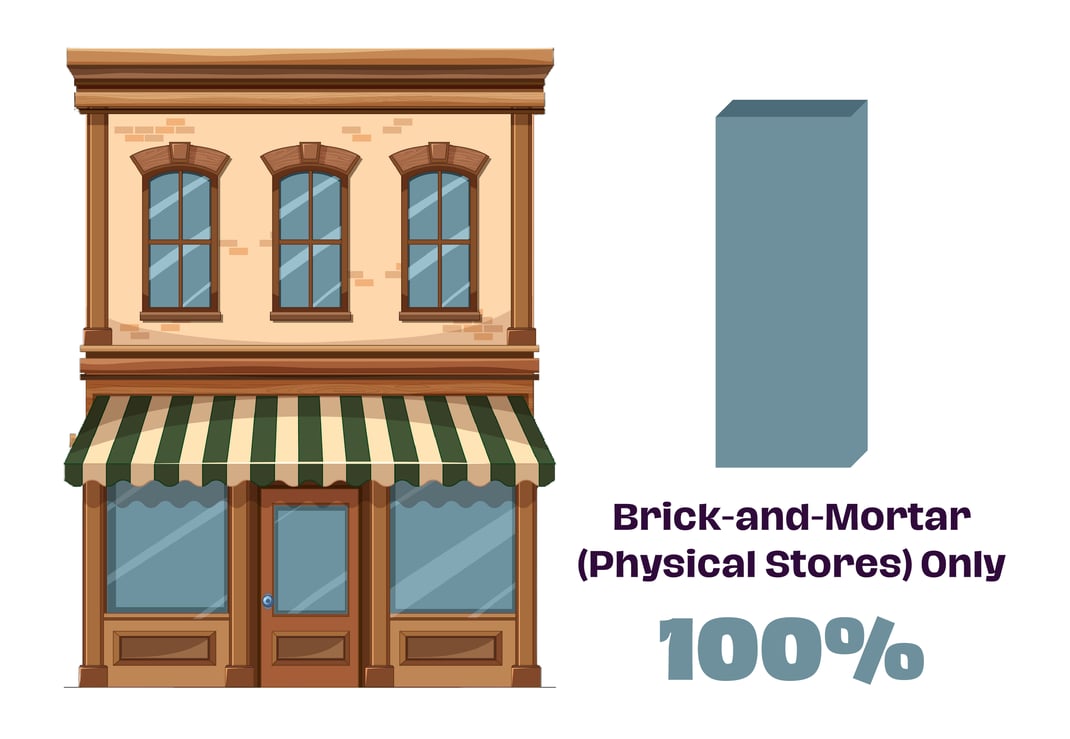
Number of Locations
Digging Into the Data
Question 1:
What is your involvement with the following systems at your company?
Respondents were required to be in charge of selecting or deploying POS systems. Interestingly, over half of the respondents (51%) are not involved in loyalty program software, and nearly a quarter of respondents (23%) do not deal with supply chain management systems. The majority of the respondents (64%) work with CRM and ERP software. This could imply opportunities to sell POS technology that better addresses loyalty programs and supply chain management systems while addressing the already heavily utilized CRM and ERP elements.
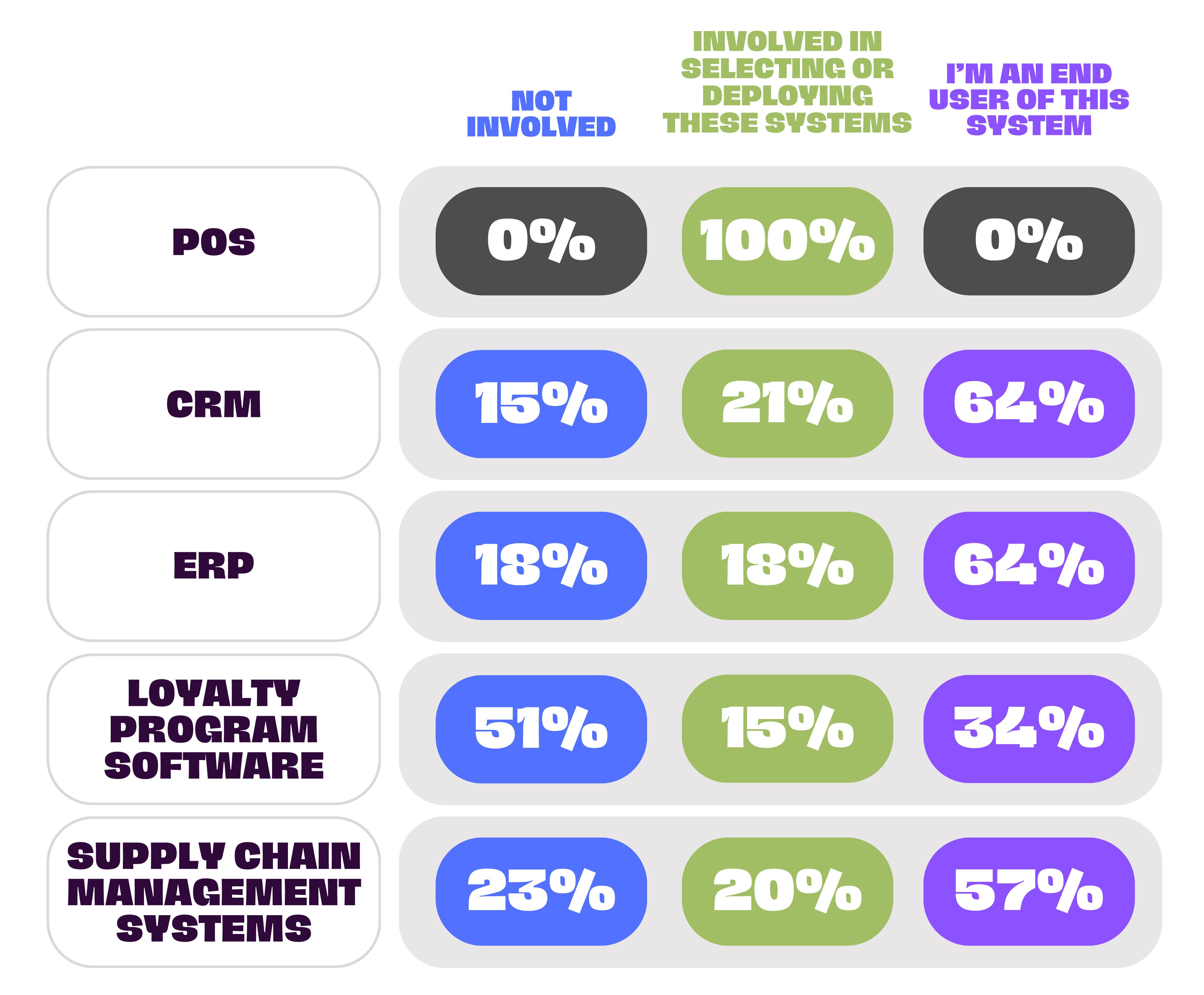
Question 2:
What are your top considerations when selecting a POS solution?
54% of respondents favored an all-in-one solution, reinforcing that end-users may be seeking additional features from their POS systems (e.g., loyalty programs and supply chain management features). The next biggest consideration was payment processor (21%), followed by hardware (16%).

Question 3:
Do you prefer that all your POS hardware (monitor, printer, cash drawer, displays, scanners, etc.) come from a single manufacturer?
Most (83%) preferred a single source for their POS hardware.
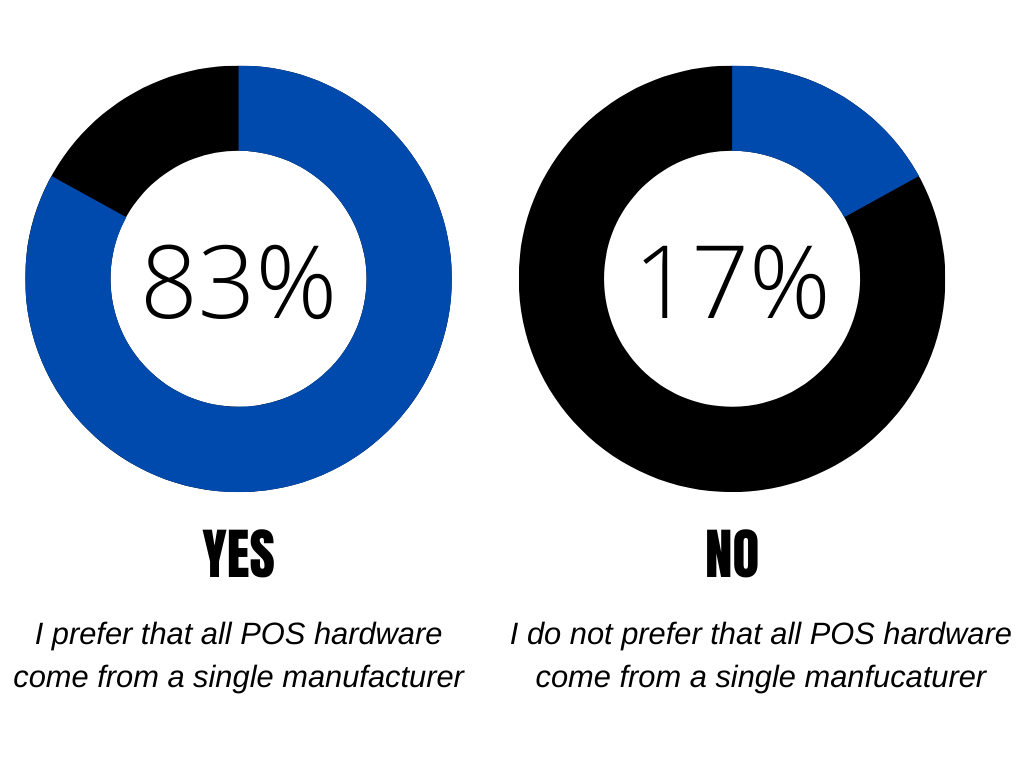
Question 4:
Do you have a preferred operating system for your POS deployments?
Windows was the most popular operating system choice by a fair amount (36%, or 13% more than its nearest competitor). ChromeOS (23%) and Apple iOS (20%) were nearly tied in popularity but still a good bit more popular than Android (13%) and Linux (8%).
Question 5:
Would you prefer your POS software to be housed on-premise (using your local devices/servers and installed/updated manually) or on-cloud (internet-connected, accessible from anywhere, auto-updates from provider)?
On-premise and on-cloud solutions were nearly evenly split, with 55% preferring on-prem and 45% preferring cloud.
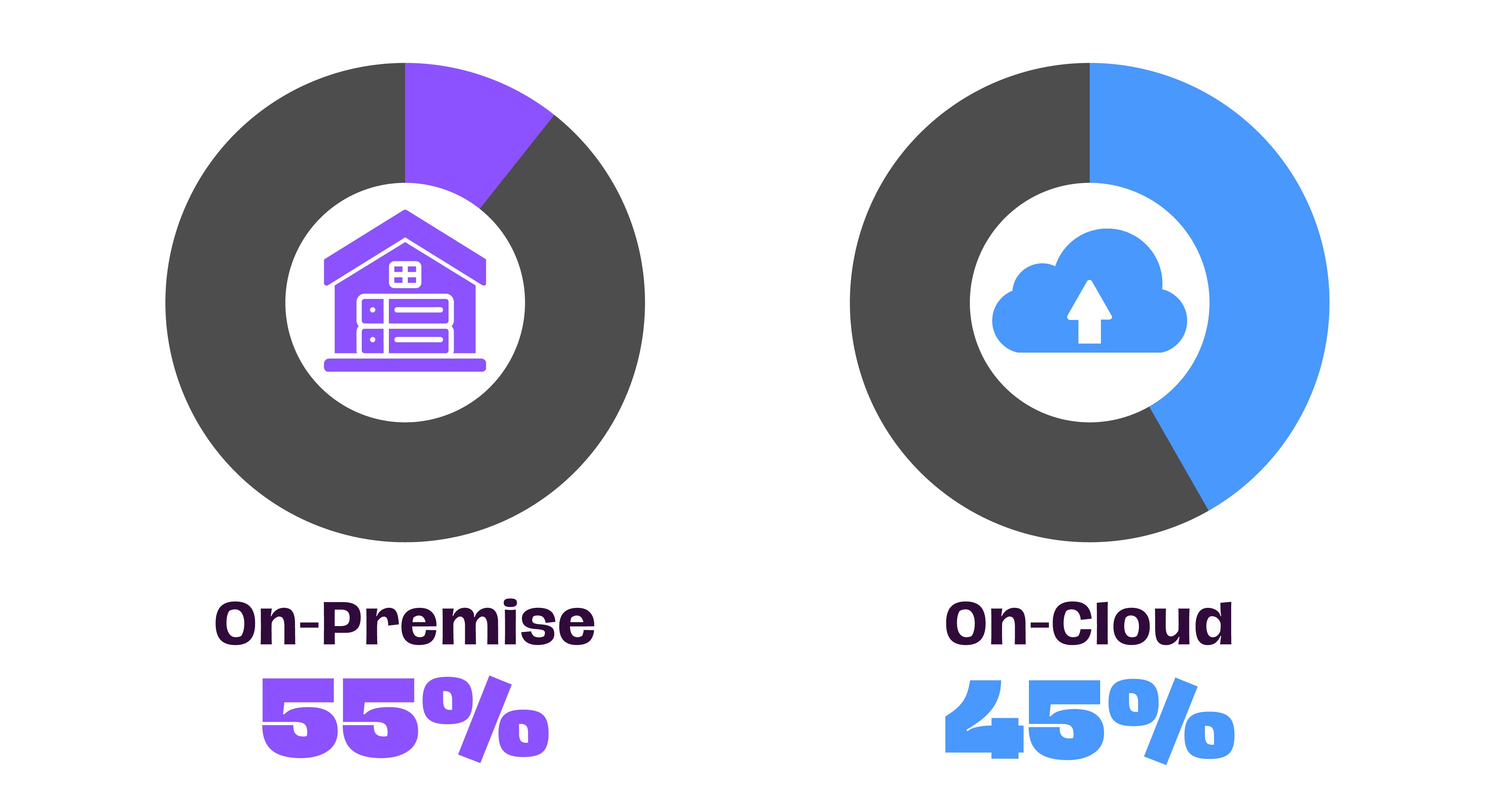
Question 6:
What best describes your attitude towards payment processing?
Most respondents (66%) preferred flexibility in choosing payment processors, while 25% preferred integrated payment processing. Surprisingly, 9% of respondents said their company either does not consider flexibility in choosing payment processors or does not know what integrated vs. non-integrated means. This could present an opportunity for VARs to help educate end-users on these terms and highlight the potential benefits of flexibility and integration in POS systems.
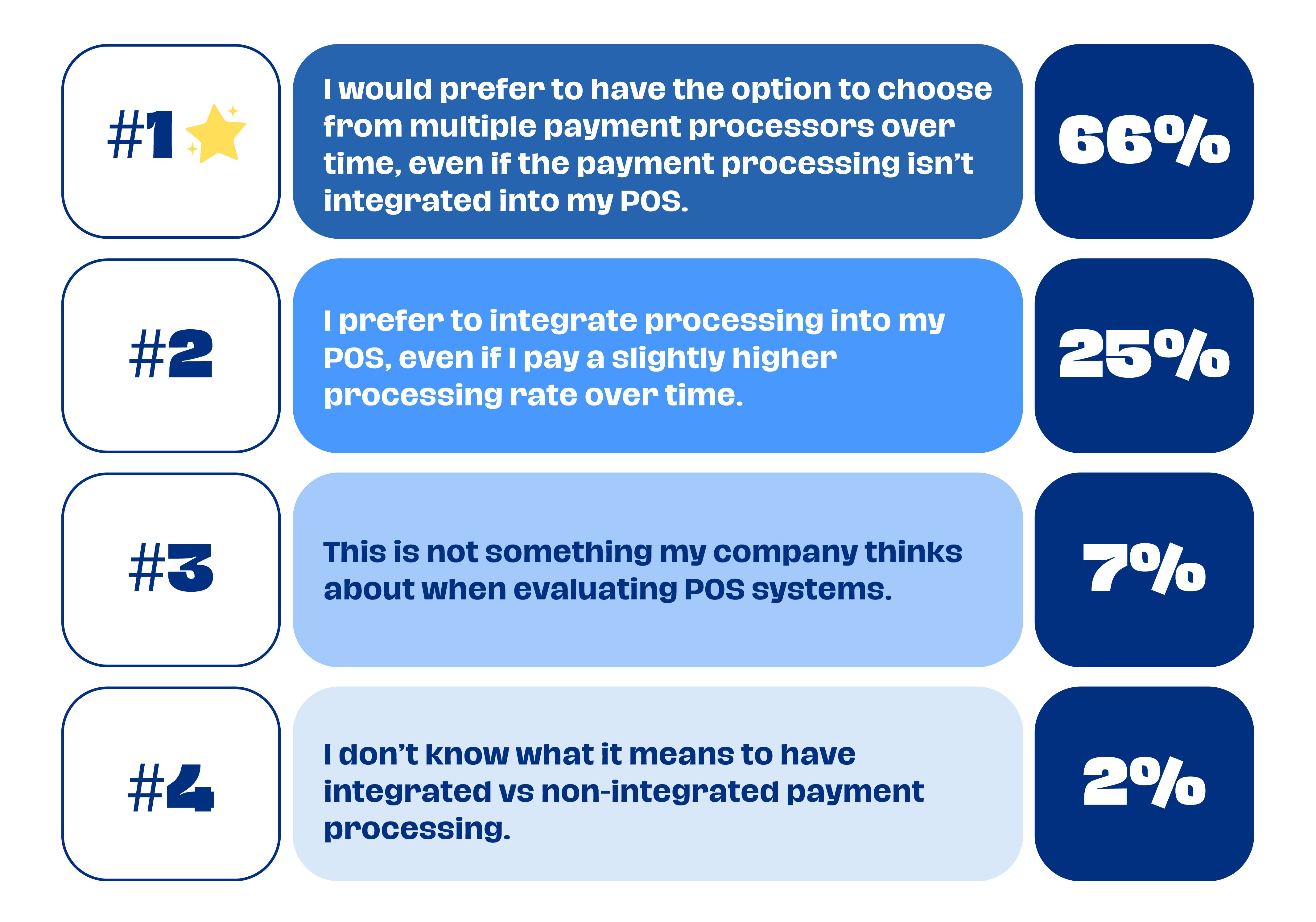
Question 7:
How do you manage your POS technology remotely? (e.g., specific software or tools)
Dedicated POS management software was by far the most common method for remote management (38%), followed by a pretty even mix of remote, cloud-based, third-party, manual, and mobile systems and tools.
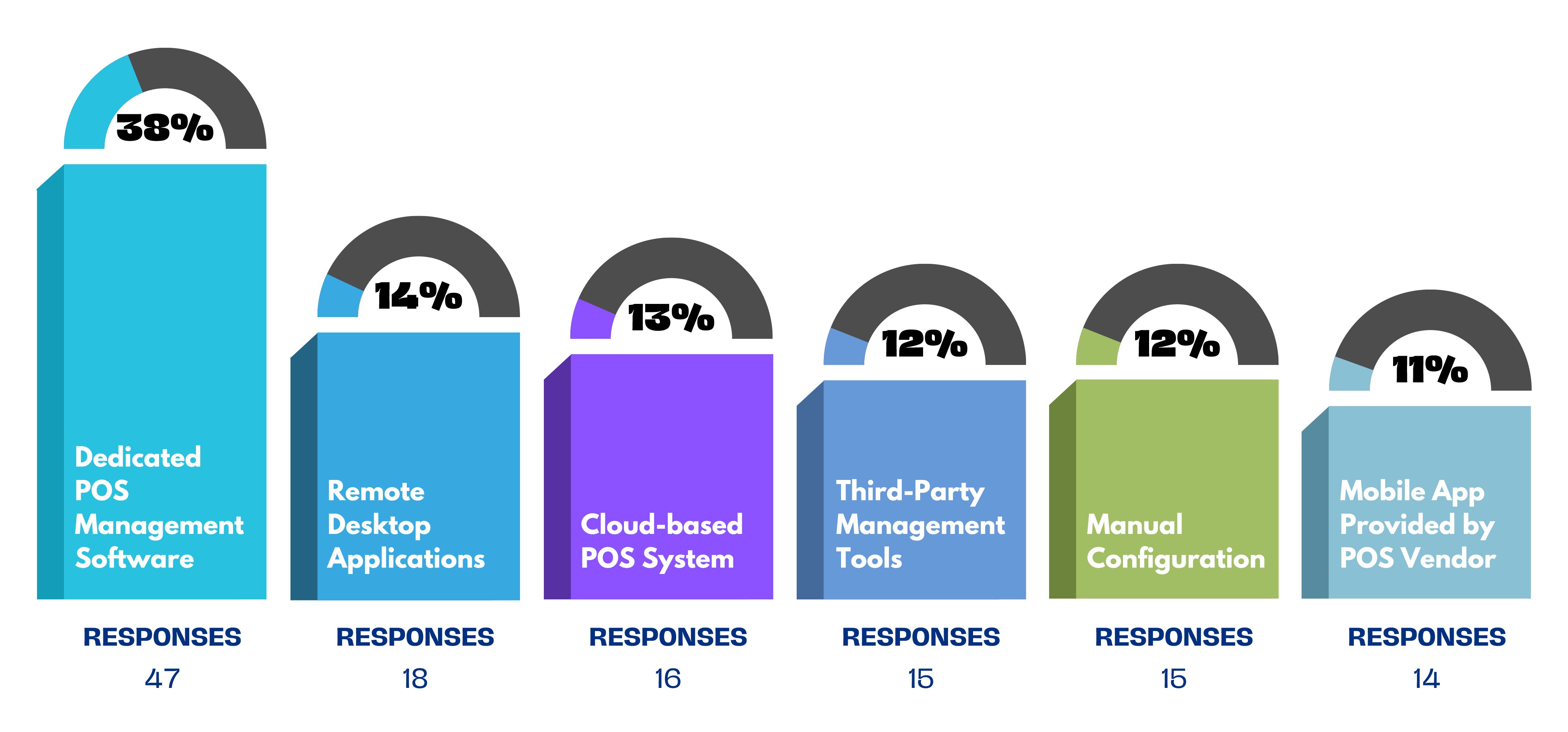
Question 8:
What features are most important to you/your organization when choosing a POS? (Please select the top 3)
The overall top three selections were longevity of hardware/software before replacement (44%), compatibility with other systems (38%), and service and support (37%). The remaining selections were pretty evenly split, but quality/low failure rates (31%) was a close fourth selection regarding features users seek.
Question 9:
When was the last time you updated your POS Software?
Nearly half of the respondents (47%) had updated their POS software in the last two years, but 52% had been over two years, so there may be some opportunity for change to address new features and market needs.
Question 10:
When was the last time you updated your POS hardware?
Over half (53%) had not updated their POS hardware in 2-5 years, and a noticeable percentage (19%) said it's been 5-10 years. This indicates that many retail executives may be laggards when updating their hardware.
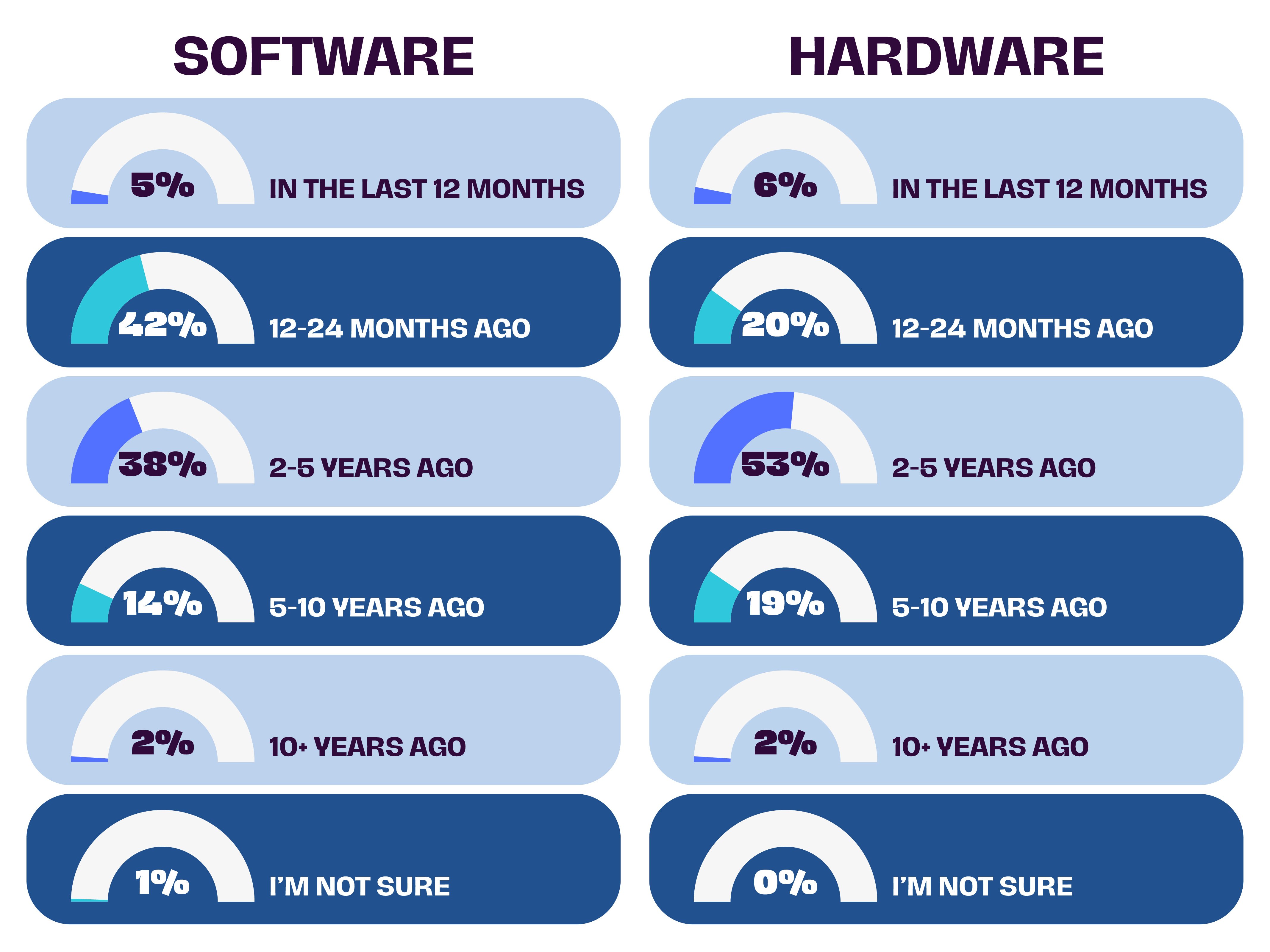
Question 11:
What are the three biggest challenges you face with your current POS system? (Please select the top three)
Integration with other systems was easily the highest-ranked challenge selected (40% of respondents). Speed/downtime (34%), security (31%), and hardware compatibility (31%) were also highly selected in rankings.
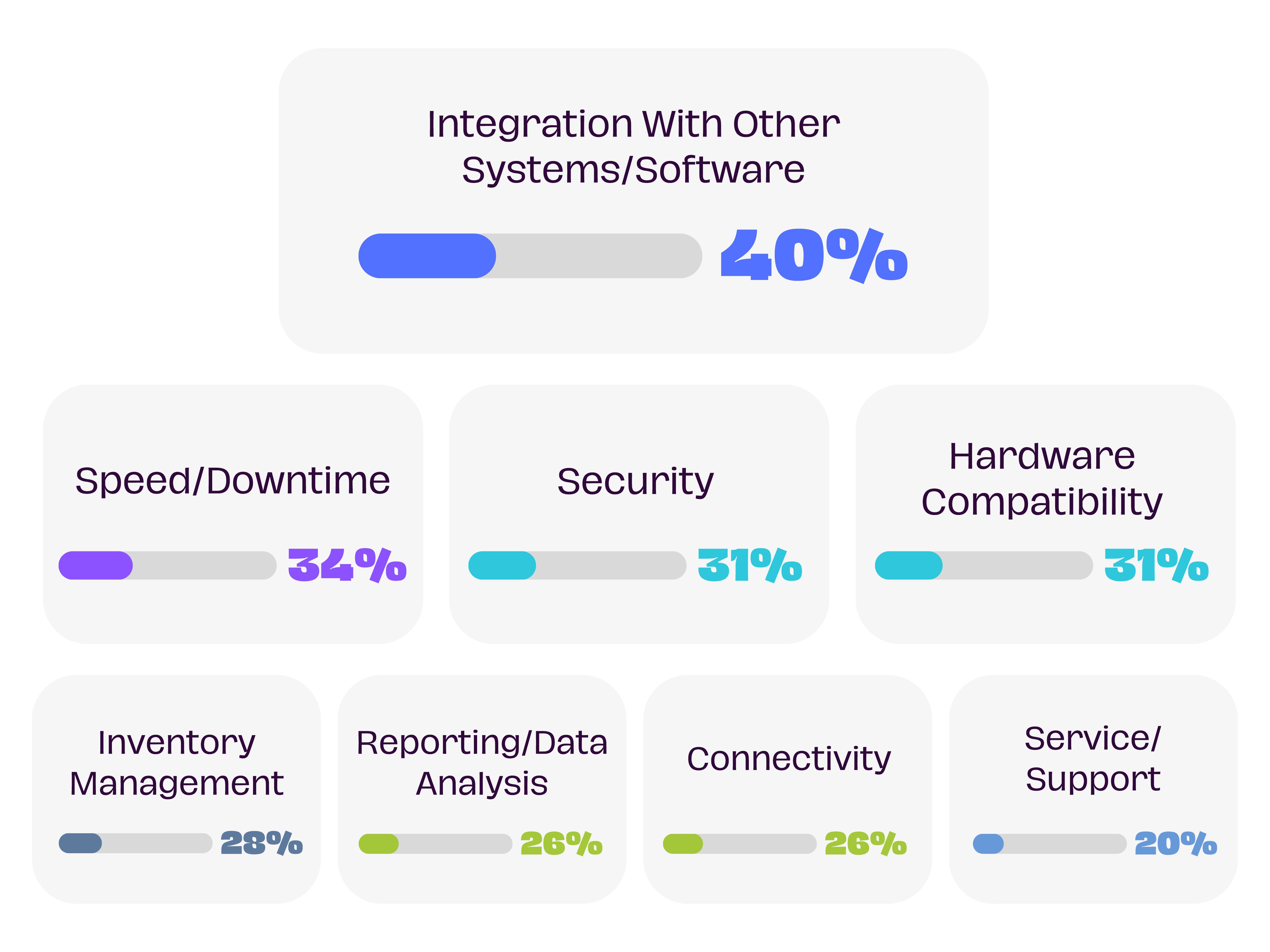
Question 12:
Where are you considering adding self-service options (Select all that apply)
There seems to be a great need for self-service POS systems that incorporate loyalty programs (50%), while guest check-in (39%), self-order (35%), and self-checkout (34%) were also highly considered.

Question 13:
What features do you wish your current POS system had? (Please select the top 3)
All of these features were pretty evenly selected, but advanced reporting and analytics was the highest on the wishlist (25%). The lack of disparity between selections may indicate that not many solutions offer every feature end-users desire. Again, all-in-one solutions are in high demand.
Question 14:
What factors influence your decision to switch POS providers (hardware or software)? (Please select the top 3)
This is another pretty even split, with a slight majority indicating that directions from the corporate office most influence buying behaviors (34%). It's worth noting that integration/compatibility with other systems (33%) and self-ordering/mobile POS options for customers (28%) were ranked highly once again. Compatibility, flexibility, and the need for self-service continue to be named as recurring needs across questions. It's also worth noting that "Better Pricing" was among the least chosen options.
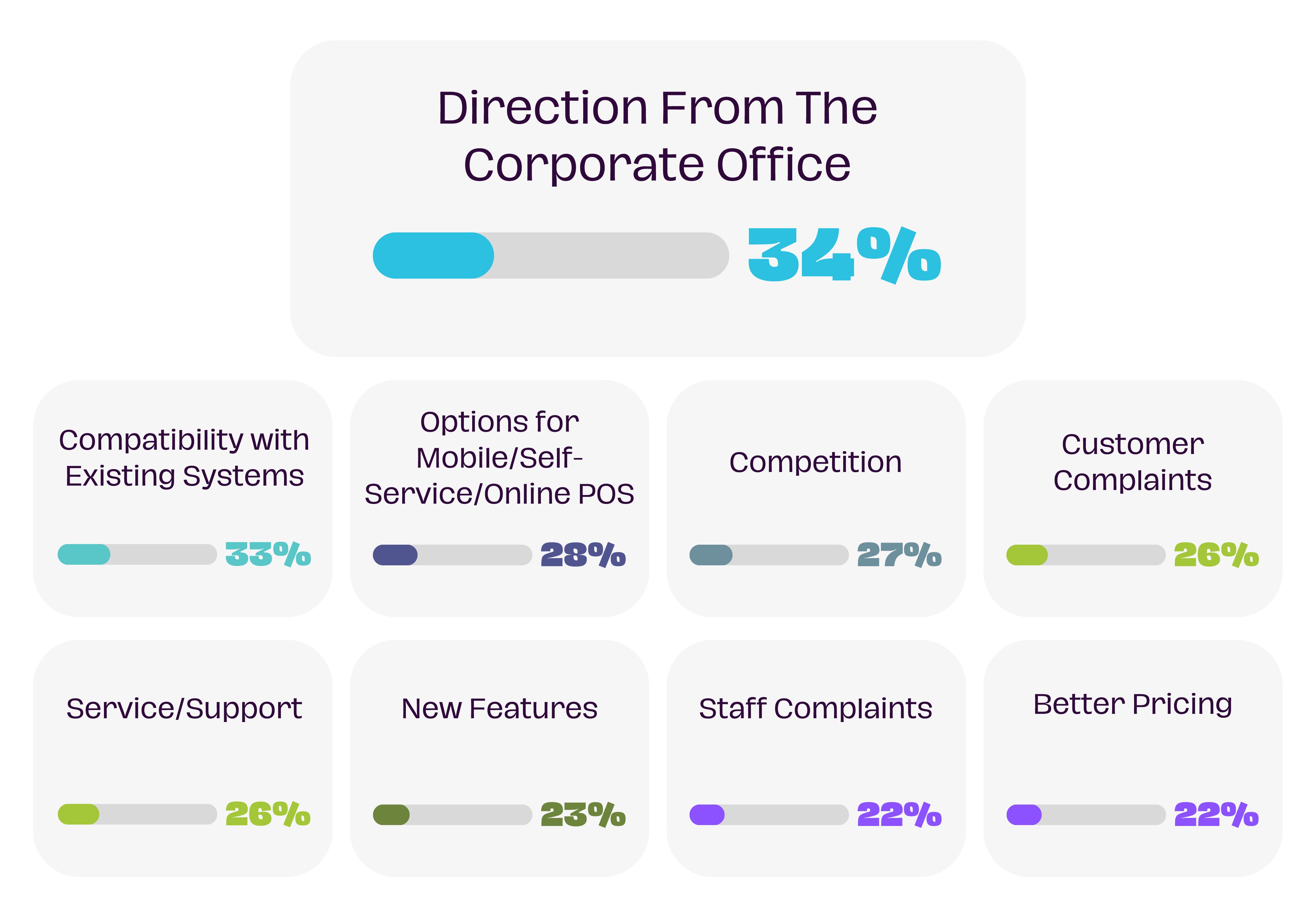
Question 15:
What's your preference for buying POS hardware, software, and services for your business?
Overwhelmingly, specific needs seem to outweigh the cost as a buying preference (68% to 23%). Buying from a single source was also mentioned as a preference in 9% of respondents. Ultimately, this indicates that users may pay more for the right solutions with specific features they need from various partners.
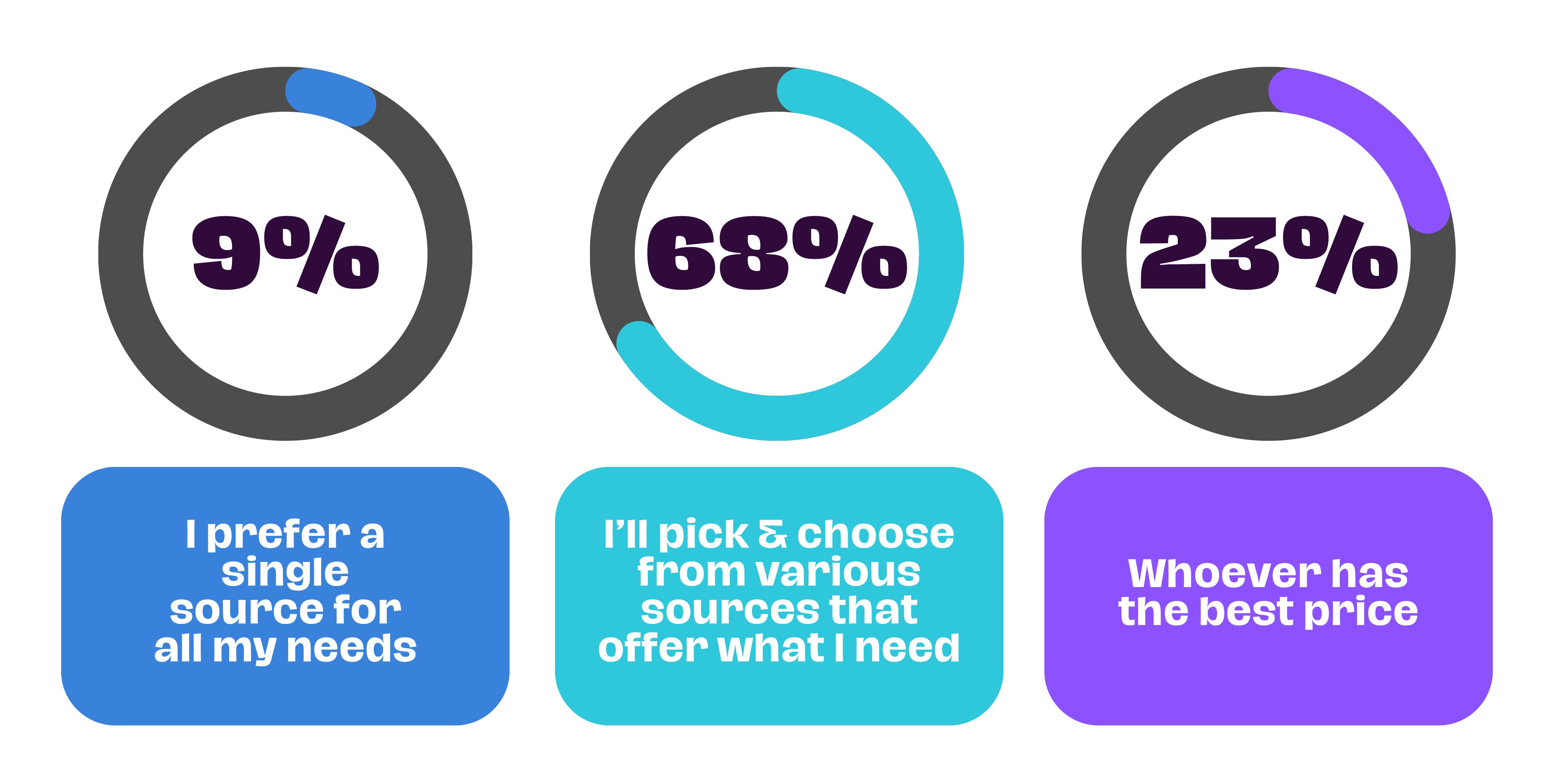
In Summary - Modern Features, Integration, and Flexibility are Key
The survey data indicates retailers are increasingly looking for comprehensive POS solutions that offer flexibility, integration, and a range of all-in-one features. Innovative features such as mobile apps and loyalty programs are also in high demand, as are self-service options and capabilities like advanced reporting and CRM solutions. Specifically, when considering switching POS providers - pricing, upgraded features, compatibility, and service/support are key factors. Additionally, addressing common challenges like inventory management and connectivity is crucial.
VARs can differentiate and position themselves as trusted partners for retailers by:
- Offering comprehensive POS solutions that include hardware, software, and services to meet the preference for a single source.
- Providing cloud-based POS options to cater to the growing demand for flexibility and remote access.
- Ensuring seamless integration of POS solutions with other business systems and hardware.
- Offering flexible payment processing options to meet the diverse needs of retailers.
- Providing robust remote management tools to help clients efficiently manage their POS technology.
- Extending value-added services such as training, support, and customization.





